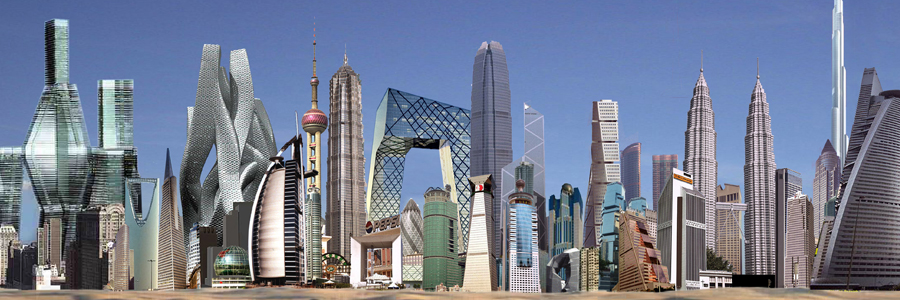“Life must be understood backward. But it must be lived forward” - Søren Kierkegaard
As one who is interested in the built environment, I find myself smack-bang in the middle of what is possibly the most exciting moment in the last 100 years. I believe the architectural landscape is poised for change. With my own eyes, I see an industry trying to search out meaning; there seems to be a growing uneasiness, a nervous anticipation for answers that go beyond current offerings.
From material and technological advancements to theory based on new models of form making, never before has there been so many options and opinions presenting themselves trying to formulate a picture of future architecture.
According to the American professor and architect Peter Eisenman, History has given 6 ‘Meta Projects’ that span from 80 BC with Marcus Vitruvius to Le Corbusier in 1914. These have all defined and shaped the architectural landscape as we know it, providing platforms from which to move.
They are as follows:
1. Vitruvius 10 books. His thesis, inscribed in Latin and Ancient Greek, on architecture, dedicated to the then emperor, Caesar Divi Filius Augustus.
2. Leon Battista Alberti. Alberti’s emphasis on mathematics as foundational to art and science.
3. Claude Perrault. Perrault was celebrated for his influential translation of Vitruvius 10 books into French which was followed by his treatise on the five classical orders of architecture, 1683.
4. Giovanni Battista (also Giambattista) Piranesi. Predominantly known for his famous impressions of Rome in the 1700s. His art brought together painting and the written word. New notions emerged to do with the understanding of site, place and time.
5. The year 1818 in the French academy where the disciplines of Theory and History merged to become one.
6. Le Corbusier’s project of Autonomy. In his 1914 Dom-Ino House he explored ideas of an architecture that comes out of its own restraint, separating from historical president. It introduces notions of replication, repetition, and prefabrication.
2. Leon Battista Alberti. Alberti’s emphasis on mathematics as foundational to art and science.
3. Claude Perrault. Perrault was celebrated for his influential translation of Vitruvius 10 books into French which was followed by his treatise on the five classical orders of architecture, 1683.
4. Giovanni Battista (also Giambattista) Piranesi. Predominantly known for his famous impressions of Rome in the 1700s. His art brought together painting and the written word. New notions emerged to do with the understanding of site, place and time.
5. The year 1818 in the French academy where the disciplines of Theory and History merged to become one.
6. Le Corbusier’s project of Autonomy. In his 1914 Dom-Ino House he explored ideas of an architecture that comes out of its own restraint, separating from historical president. It introduces notions of replication, repetition, and prefabrication.
As 2014 comes to an end, we acknowledge that it is exactly 100 years since Corbusier’s groundbreaking Dom-Ino diagram opened up new pathways. Understanding this, Eisenman suggests that the current epoch presents a moment in which a new Meta project is due.
So, what could this look like?
One thing is for sure, what has been considered capital ‘A’ architecture is being questioned by the broader community. This comes off the back of the GFC, unprecedented technological advancements and an ever increasing information super highway where anything can be obtained. This bell curve seems to be screaming louder than anything at the moment. Armed with so much at their fingertips, it begs the question, does the younger generation of professionals even want to search out a foundation, a voice of reason amongst the noise?
To paraphrase, Eiserman warns that with the absence of an authority we move into very precarious circumstances. Since 1914 Corb, there have been no living fathers or mothers in architecture that have provided the foundation for a new diagram.
Whether you agree with Peter’s perspective or not, architecture must have at its core a ‘question’, or as Immanuel Kant puts it, pursue a ‘subject’ that informs the ‘object’. If there is no ‘question’ a compounding degree of desperation emerges. Ultimately, this desperation transitions into a hyper emphasis on personal ‘signature’ and an architecture of ‘objectivity’.
So, it is an interesting moment in time. Architecture stands at a crossroad but is seemingly unsure which way to look. This is portrayed so well in Rem Koolhaas’s graphic of the collective capital ‘A’ buildings of the last 20 years.
Could it be that we are looking for answers in the entirely the wrong place, Eisenman suggests that we need a new diagram? What if it is not a drawing, nor a way of building, or a technology?
What do you think?

